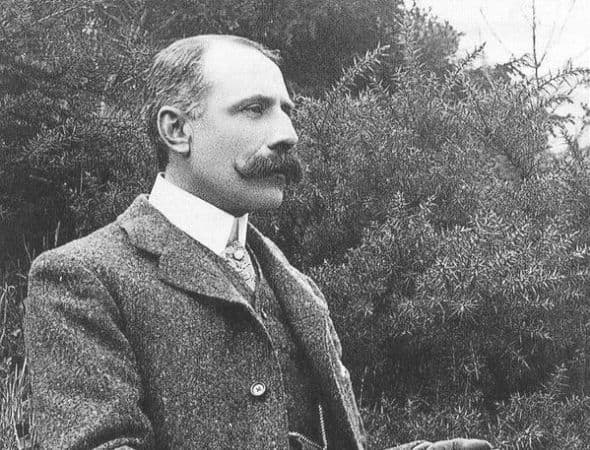ELGAR: In the South
by Jeff Counts
Duration: 19 minutes.
THE COMPOSER – EDWARD ELGAR (1857–1934) – Elgar was prone to stress-related infirmities even in the best of times. He was riding high at the turn of the century thanks to the popularity of the Enigma Variations but needed a break after the completion of his oratorio The Apostles. Underlying everything, the successes and the fatigue, was the burden laid on by his hopeful countrymen for a grand “English” symphony. It was an important creative project for Elgar, one he took very seriously, but it continued to frustrate him. Travel often served as a tonic for Elgar, and Italy was his preferred refuge after 1903. He visited there at least five times over the next decade.

THE MUSIC – It was a common custom in the 19th and early 20th centuries for people of means in Europe’s colder countries to winter in Italy and Spain. For a few of the artistic French, Spain became an obsession. Italy too proved a capable enchantress with Mendelssohn’s 4th Symphony and Strauss’ Aus Italien serving as prime examples of her charms. Elgar’s first trip occurred shortly after the premiere of The Apostles in 1903. The piece was an instant hit, but no amount of praise for his other works would be enough to relieve the pressure Elgar felt to compose a true symphony. The pride of his nation was at stake, and he knew nothing sort of a definitive statement of English consequence would do. To free his mind from this weight for a bit, Elgar first travelled to Bordighera but found it too full of British expats to feel much like a break from the expectations of home. From there Elgar made his way to the town of Alassio and, in that coastal city, he found a ready source of inspiration, though not yet for the symphony he knew his people wanted. While called an overture, In the South is more rightly identified as a tone poem in its design and impact. Comparisons to Strauss are obvious in this regard, not only for the similarity of the source locale (recall Aus Italien, mentioned above) but also for the athletic, boisterous opening measures that bring Don Juan to mind. Elgar said the music came to him “in a flash” while walking by an ancient Roman road and that all that remained was to simply “write it down.” Like Strauss, Elgar’s tonal imagery is notable for its facile mood shifting and colorful orchestration. Elgar commonly linked his descriptive music with texts that inspired him, finding words as provocative as vistas. The score of In the South is one such manuscript. It included several quotations from the poetry of Tennyson and Byron that evoke “lands…of olive, aloe, and maize and vine” as well as a reference to old Italy as “the garden of the world.”
THE WORLD – Elsewhere in 1904, The Anglo-Tibetan Treaty was signed, the stage play Peter Pan debuted in London, and the Herero people of South-West Africa staged an uprising against German colonial rule.
THE CONNECTION – In the South has only been performed by the Utah Symphony on two previous Masterworks programs. The most recent concerts were in 2013 under Thierry Fischer.











